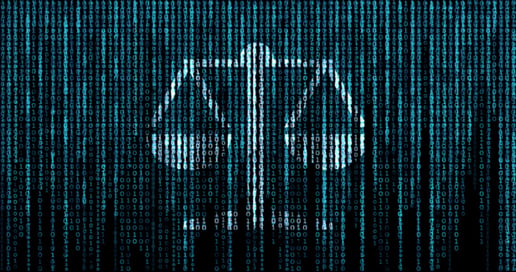Features

Ransomware: The Good, the Bad and the Ugly
Ransomware has quickly emerged as a billion dollar industry and shows no sign of slowing down. So why is ransomware the ubiquitous nuisance it is? Simple: It works. Over 70% of companies pay the ransom.
Features

Alternative Legal Services Providers: Changing Buyer Perceptions
A common perception of today's legal services industry is that buyers of legal services have many more choices because legal services are disaggregating and unbundling. No longer are law firms the only option for clients with legal work; they now have a wider menu of providers from which to choose.
Features

How Analytics Is Shaping the Current and Future Practice of Law
Anyone following the news headlines of late is aware that artificial intelligence (AI) is being heralded as the technology that will transform industries far and wide — including the legal profession. The evolution of technology in the practice of law today has already led to significant advances in data analytics and data visualization, each of which are having a significant impact on legal work.
Features

New Research: Employee Privacy and Corporate Legal Risk
The use of business email accounts and digital devices for personal communications can be risky for both employers and employees. However, employees of all levels may be commingling corporate communications with their personal information, according to new research.
Features

<b><i>Online Extra</b></i><br>The WannaCry Attack: A Wake-up Call for Organizational Information Governance?
The sort of ransomware attack experts have warned about for years has happened. Now organizations need to examine their security postures.
Features

Federal and State Cybersecurity Regulation of Financial Services Firms
Two states recently enacted or proposed rules for financial services firms. This may be just the beginning of a national trend toward increased state regulation of cybersecurity matters. Financial services firms and their management should be prepared to proactively address the shifting regulatory landscape as it continues to evolve.
Features

<i><b>Online Extra:</b></i><br>Target to Pay $18.5M to States over Data Breach
Retail giant Target has agreed to pay a total of $18.5 million in a settlement with 47 states over a 2013 consumer data breach that resulted in over 100 million pieces of credit card or personal information being stolen by hackers.
Features

The State of Data Breach Litigation and How to Avoid It
The number of records compromised in data breaches in 2016 increased an astounding 86% over 2015 breaches. This has led to numerous data breach litigations in the civil and regulatory context. What are the major cases and trends from 2016? And what can organizations do to try to reduce their risks of breaches and litigations?
Features

State of the Industry: E-Discovery and Cybersecurity
<b><i>Part Two of a Three-Part Article</b></i><p>Examining the current similarities between e-discovery and cybersecurity and details how the history of e-discovery mirrors the present of cybersecurity and is a predictor of future patterns in the cybersecurity staffing market.
Features

Using Computer Forensics to Investigate Employee Data Theft
Departing employees have a sense of ownership over the data that they copy. Intellectual property commonly stolen includes customer lists, secret formulas, source code, strategy documents and other trade secrets. The information is often used against the organization when the former employee goes to work for a competitor or decides to start a new company.
Need Help?
- Prefer an IP authenticated environment? Request a transition or call 800-756-8993.
- Need other assistance? email Customer Service or call 1-877-256-2472.
MOST POPULAR STORIES
- A Lawyer's System for Active ReadingActive reading comprises many daily tasks lawyers engage in, including highlighting, annotating, note taking, comparing and searching texts. It demands more than flipping or turning pages.Read More ›
- The Brave New World of Cybersecurity Due Diligence in Mergers and Acquisitions: Pitfalls and OpportunitiesLike poorly-behaved school children, new technologies and intellectual property (IP) are increasingly disrupting the M&A establishment. Cybersecurity has become the latest disruptive newcomer to the M&A party.Read More ›
- The 'Sophisticated Insured' DefenseA majority of courts consider the <i>contra proferentem</i> doctrine to be a pillar of insurance law. The doctrine requires ambiguous terms in an insurance policy to be construed against the insurer and in favor of coverage for the insured. A prominent rationale behind the doctrine is that insurance policies are usually standard-form contracts drafted entirely by insurers.Read More ›
- Removing Restrictive Covenants In New YorkIn Rockwell v. Despart, the New York Supreme Court, Third Department, recently revisited a recurring question: When may a landowner seek judicial removal of a covenant restricting use of her land?Read More ›
- The New York Uniform Commercial Code Comes of AgeParties in large non-consumer transactions with no connection whatsoever to New York often choose its law to govern their transactions, and New York statutes permit them to do so. What most people do not know is that the New York Uniform Commercial Code is outdated.Read More ›
